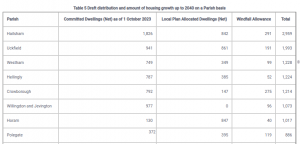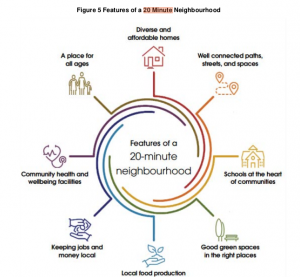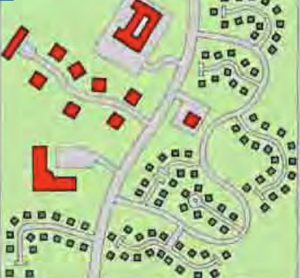At our recent Carbon Neutrality Symposium held at Eastbourne Town hall on 20th April, our keynote speaker, Richard Garland, a prominent local business owner, gave an inspirational talk about how local businesses can make a very significant contribution towards Eastbourne becoming a truly Carbon Neutral town by 2030. Below is an abridged version of his speech:
Good afternoon, everyone. I am Richard Garland, and amongst other things I am co-founder of Gradient Consultants. We are chartered surveyors, project managers and compliance consultants, based here in town since 2004. Some of our projects you may be familiar with include the Fishing Quay development on Sovereign Harbour, Costa Drive-thru on Hampden Retail Park and the affordable rental flats in Southfields Road. In 2020 we certified as a B-Corp, the first independent company in Eastbourne and one of the first UK built environment professional firms to do so. B-Corp is a global movement transforming the economy to benefit ALL – people, communities and the planet. We still have to make a profit but the way we go about it isn’t about making profit at any cost – everyone has to benefit along the way.
Our purpose is our commitment to making a positive impact on the world. As a certified B-Corp, our values are deeply rooted in sustainability, social responsibility, and ethical business practices. We believe what we do in the next 7 years leading up to 2030 really matters and now is the time to act, with our industry being responsible for over 40% of the UK’s carbon emissions. We consider ourselves carbon neutral through our support of Ecologi. Ecologi® have achieved the Verified Carbon Standard (VCS) and have been our offsetting partner for a number of years. We currently offset the business and personal emissions for all our people . We support tree planting and ecological schemes across the world. In the last 3 years we have offset 138 tonnes of carbon, planting over 2000 trees, and supported global sustainable projects. Our goal is to retain this off- setting, regardless of emissions reduction , but bring it closer to home, which we have already started to do by supporting planting on the Eastbourne escarpment. But we want to go further…
In 2022 we decided to set our ambitions on Net-Zero by 2030. We recognised that at some point in the not too distant future Net Zero will be the new carbon neutrality, so we wanted to be ahead of that journey. We started looking at data collection. I cannot begin to tell you how many articles on how to measure, what to measure, and when to measure from, we read – and at one point we got analysis paralysis – just stuck! And it took a friend to simply say stop thinking and just do something, anything – even if it is simply to walk to work and then make that your first action! This was a bit of a light bulb moment and as long as we could evidence a robust source of data it was worth doing something positive, rather than worrying over the how! We looked and celebrated what we were already doing, which included recycling pretty much everything, making sure our unwanted IT equipment and furniture goes into the circular economy, and pushing our clients to install bee bricks, swift boxes and fruit trees onto their development sites.
Calculating our Scope 1 and 2 emissions was relatively straightforward for us as a professional services business so I won’t dwell too much on it- the biggest change is the utility companies will help you with this so it is much easier to deal with. In conjunction with our landlord we now have an office that has solar panels, LED lighting, infra-red heating panels, additional roof insulation and film on the windows to reduce solar gain. As for the dreaded Scope 3 emissions, for a firm such as ours this is where the majority of our emissions lurk and a challenging area for organisations in terms of data collection and carbon reduction initiatives. From travel to water to the things we buy, the list was long but eventually we agreed a more manageable list of priority measures, assisted by Small99. Our Pathway to Net Zero covers short and longer term planned activities to reduce our business ‘and personal’ GHG emissions, as well as push for a greater reduction in the emissions of the projects and services we advise on and can influence. At the last count there were 50 + ideas and actions. The priority ones get a champion, an estimated date for achievement and the emission saving impact. As a result we now use local suppliers as a priority. Local sourcing helps us reduce our carbon footprint and supports our community and local economy. We specify nature based materials, including hemp, lime and we now specify Graphenstone paint for all our projects. This paint absorbs CO2, removes pollutants to purify the air and as a mineral based paint it contains no microplastics. We hold our business event at venues close to a train station to encourage guests to make sustainable travel choices.
And we waved goodbye to our computer server in October last year, which was no longer needed since moving to the cloud as one of our reduction actions. The server had been running continuously for 6 years and by retiring the server we are saving 118 kgCO2e per year. The biggest impact on the list we are currently addressing is banking and pensions. Moving these financial instruments has the potential to have the greatest impact of all – a sustainable pension is 21 times more powerful than giving up flying, becoming vegetarian and switching to renewable energy. Our goal is to make a 10% CO2e reduction year on year from 2024 to 2030. This will have reduced our overall emissions by 70% by 2030. With the Scope 1 and 2 emissions reduction prior to 2023 we believe we can achieve the necessary reduction in emissions to at least try and hit Net Zero by 2030.
So why do this, what and who benefits? B-Corp gave us ‘a legal high, we started to see ourselves as activists and ethical leaders. For us it is a climate justice choice . As a business we are de-risking the need to meet current and future compliance requirements within our industry , and we are acknowledging the opportunities of the low carbon transition – the green economy. For example, retrofitting the UK’s existing building stocks, measuring the Whole Life Carbon costs on construction projects, and the impact of Net Zero building standards, are all opportunities for sustainable growth and meeting future Department for Energy Security and Net Zero targets. Clients need us to have taken action because their funders (banks, pension funds, government) will be demanding it of them. We are influencing our supply chain to take action before they require it of us and we are offering to assist them with that change – openness, sharing ideas and transparency will make the journey go quicker! And to close, my advice to anyone at the beginning or on this journey is: do not over-strategise and get stuck in the data. Imagine if we did nothing and just talked about it? Look at what you have done so far, celebrate it and then take another step on your journey – be a force for good whatever you do!
We are grateful to Richard for kindly making available a full transcript of his speech, as well as the slideshow to accompany it.





